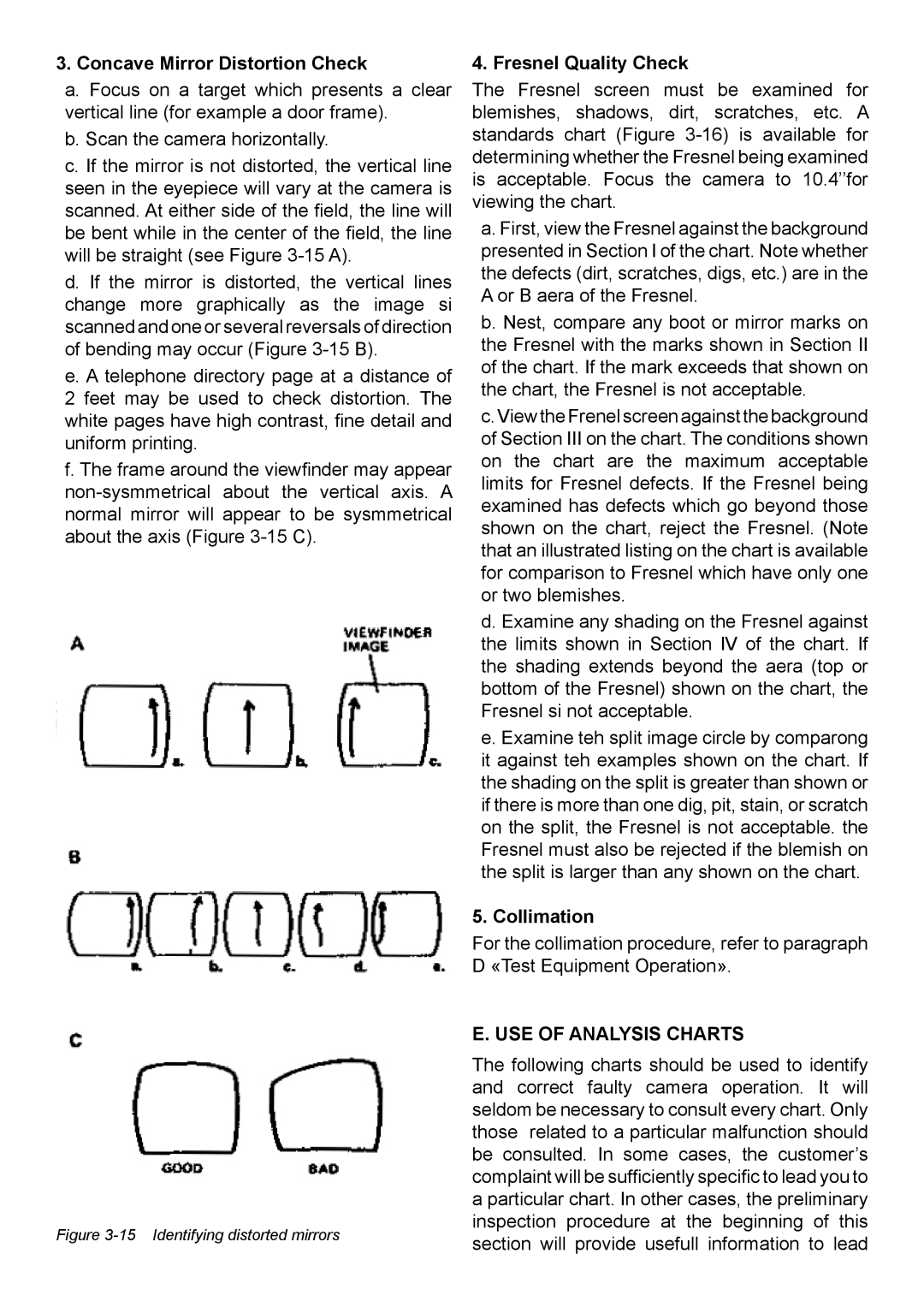
3.Concave Mirror Distortion Check
a.Focus on a target which presents a clear vertical line (for example a door frame).
b.Scan the camera horizontally.
c.If the mirror is not distorted, the vertical line seen in the eyepiece will vary at the camera is scanned. At either side of the field, the line will be bent while in the center of the field, the line will be straight (see Figure
d.If the mirror is distorted, the vertical lines change more graphically as the image si scanned and one or several reversals of direction of bending may occur (Figure
e.A telephone directory page at a distance of
2 feet may be used to check distortion. The white pages have high contrast, fine detail and uniform printing.
f.The frame around the viewfinder may appear
Figure 3-15 Identifying distorted mirrors
4. Fresnel Quality Check
The Fresnel screen must be examined for blemishes, shadows, dirt, scratches, etc. A standards chart (Figure
a. First, view the Fresnel against the background presented in Section I of the chart. Note whether the defects (dirt, scratches, digs, etc.) are in the A or B aera of the Fresnel.
b. Nest, compare any boot or mirror marks on the Fresnel with the marks shown in Section II of the chart. If the mark exceeds that shown on the chart, the Fresnel is not acceptable.
c. View the Frenel screen against the background of Section III on the chart. The conditions shown on the chart are the maximum acceptable limits for Fresnel defects. If the Fresnel being examined has defects which go beyond those shown on the chart, reject the Fresnel. (Note that an illustrated listing on the chart is available for comparison to Fresnel which have only one or two blemishes.
d. Examine any shading on the Fresnel against the limits shown in Section IV of the chart. If the shading extends beyond the aera (top or bottom of the Fresnel) shown on the chart, the Fresnel si not acceptable.
e. Examine teh split image circle by comparong it against teh examples shown on the chart. If the shading on the split is greater than shown or if there is more than one dig, pit, stain, or scratch on the split, the Fresnel is not acceptable. the Fresnel must also be rejected if the blemish on the split is larger than any shown on the chart.
5. Collimation
For the collimation procedure, refer to paragraph D «Test Equipment Operation».
E. USE OF ANALYSIS CHARTS
The following charts should be used to identify and correct faulty camera operation. It will seldom be necessary to consult every chart. Only those related to a particular malfunction should be consulted. In some cases, the customer’s complaint will be sufficiently specific to lead you to a particular chart. In other cases, the preliminary inspection procedure at the beginning of this section will provide usefull information to lead
